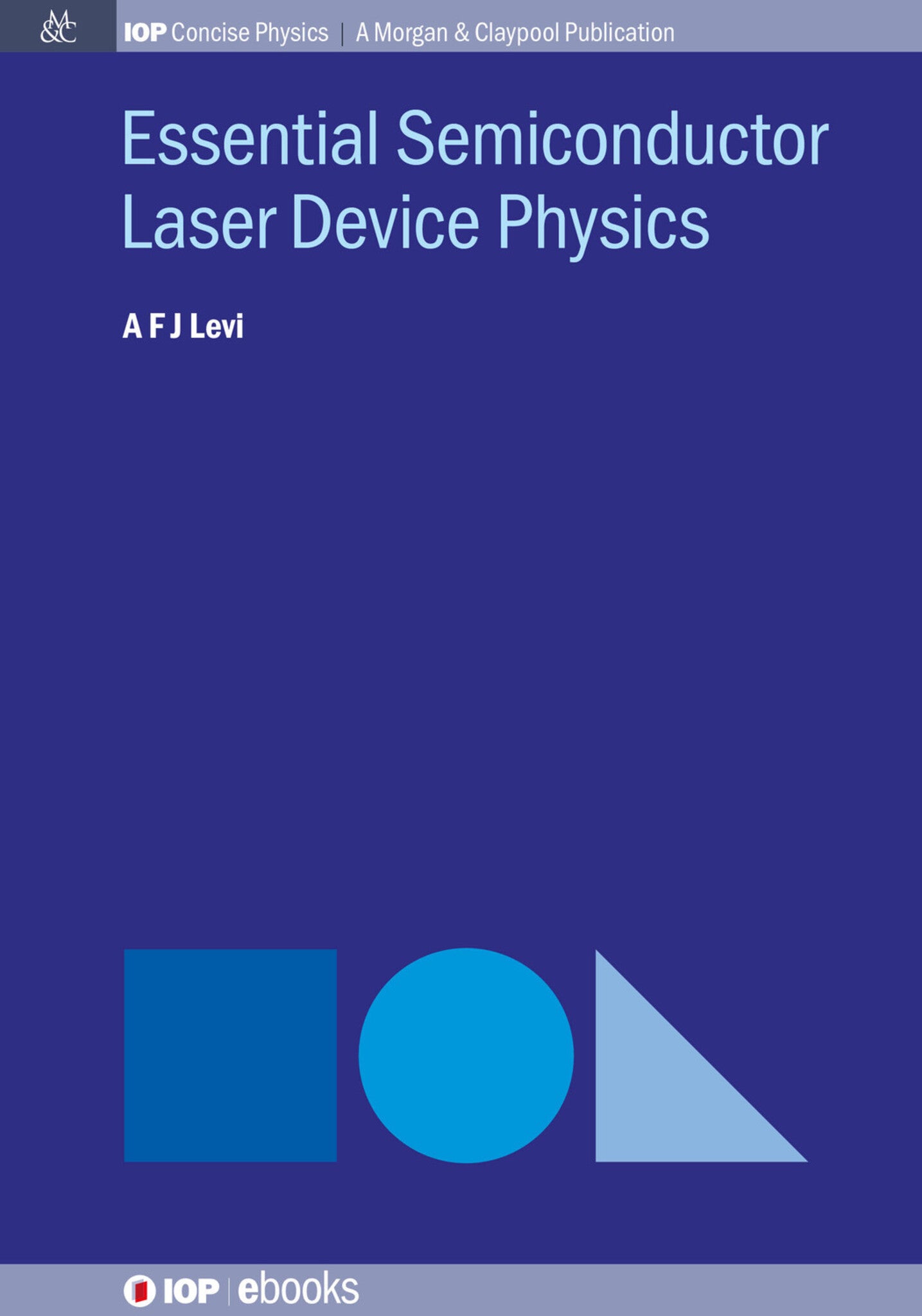We're sorry. An error has occurred
Please cancel or retry.
Essential Semiconductor Laser Device Physics

Some error occured while loading the Quick View. Please close the Quick View and try reloading the page.
Couldn't load pickup availability
- Format:
-
17 July 2018

The invention of the semiconductor laser along with silica glass fiber has enabled an incredible revolution in global communication infrastructure of direct benefit to all. Development of devices and system concepts that exploit the same fundamental light-matter interaction continues. Researchers and technologists are pursuing a broad range of emerging applications, everything from automobile collision avoidance to secure quantum key distribution.
This book sets out to summarize key aspects of semiconductor laser device physics and principles of laser operation. It provides a convenient reference and essential knowledge to be understood before exploring more sophisticated device concepts. The contents serve as a foundation for scientists and engineers, without the need to invest in specialized detailed study. Supplementary material in the form of MATLAB® is available for numerically generated figures.

SCIENCE / Space Science / Astronomy, Astrophysics, SCIENCE / Physics / Astrophysics, SCIENCE / Physics / Quantum Theory, Quantum physics (quantum mechanics and quantum field theory), Applied physics

Preface Author biography
1 Semiconductor band structure and heterostructures 1.1 Atom shape and crystal structure 1.1.1 The spherical harmonics 1.2 Hybridization 1.3 Crystal structure 1.3.1 Cubic lattices in three dimensions 1.3.2 Diamond and zinc blende crystal structure 1.3.3 Hexagonal crystal structure 1.3.4 The reciprocal lattice 1.4 The one-electron Schrödinger equation 1.5 Bloch’s theorem 1.5.1 Wannier functions and Bloch’s theorem 1.6 The origin of complex band structure 1.6.1 The real band structure 1.6.2 The imaginary band structure 1.6.3 An example of complex band structure 1.7 The tight binding method 1.7.1 Single s-band in a one-dimensional lattice 1.8 Tight-binding in three-dimensions 1.8.1 The band structure of group IV and III-V semiconductors 1.9 The semiconductor heterostructure 1.10 Double heterostructure laser diode 1.11 References
2 Spontaneous emission and optical gain 2.1 Spontaneous and stimulated emission 2.1.1 Spontaneous emission 2.1.2 Absorption and its relation to spontaneous emission 2.2 Optical transitions using the golden rule 2.2.1 Optical gain the presence of electron scattering 2.3 Comments on the success of a simple model 2.4 References
3 The semiconductor laser diode 3.1 Designing a laser diode 3.1.1 The optical cavity 3.1.2 Fabry-Perot longitudinal resonances 3.1.3 Mode profile in an index-guided slab waveguide 3.1.4 Mirror loss and photon lifetime 3.1.5 The buried heterostructure Fabry-Perot laser diode 3.2 References
4 Single-mode rate equations 4.1 Continuum mean-field single-mode semiconductor laser diode rate equations 4.2 Numerical method for solving rate equations The Runge-Kutta method 4.3 Large-signal transient response 4.3.1 Scaling with spontaneous emission factor, β 4.3.2 Critical slowing 4.3.3 The origin of critical slowing 4.3.4 Cavity formation 4.4 Small-signal intensity response 4.5 References
5 Noise and fluctuations 5.1 Relative intensity noise (RIN) 5.1.1 Shot-noise limit to RIN 5.2 Langevin intensity rate equations 5.2.1 Phase noise Langevin rate equations and line width enhancement factor 5.2.2 Spectral line width 5.3 Fluctuations and temperature dependence 5.4 References
6 Quantum behavior 6.1 An experiment to prove the photon exists 6.2 The beam splitter 6.3 The Mandel effect: Transmission of two indistinguishable photons at a beam splitter 6.4 Transmission of n indistinguishable photons at a beam splitter 6.4.1 Transmission of 8 indistinguishable photons at a beam splitter 6.4.2 Transmission of 64 indistinguishable photons at a beam splitter 6.4.3 The Fabry-Perot resonator 6.5 Quantization of photon field and atom 6.5.1 The Jaynes-Cummings Hamiltonian 6.5.2 The two-level system in the rotating wave approximation 6.6 The mesoscale laser 6.6.1 Beyond the mesoscale laser 6.7 References



